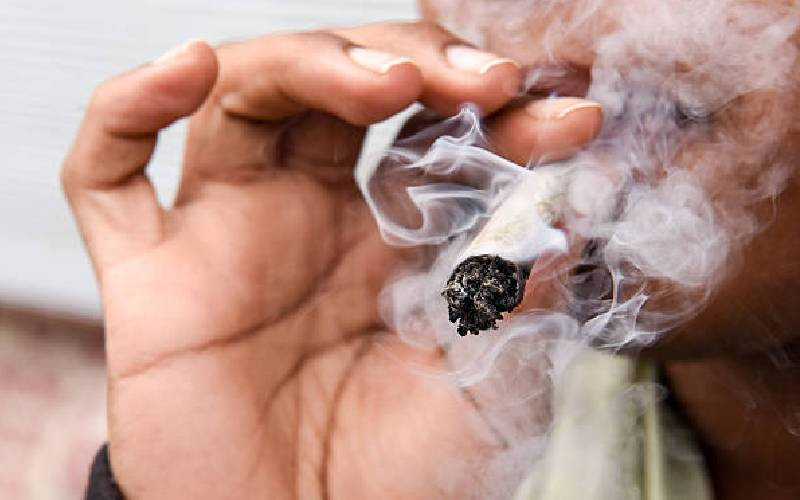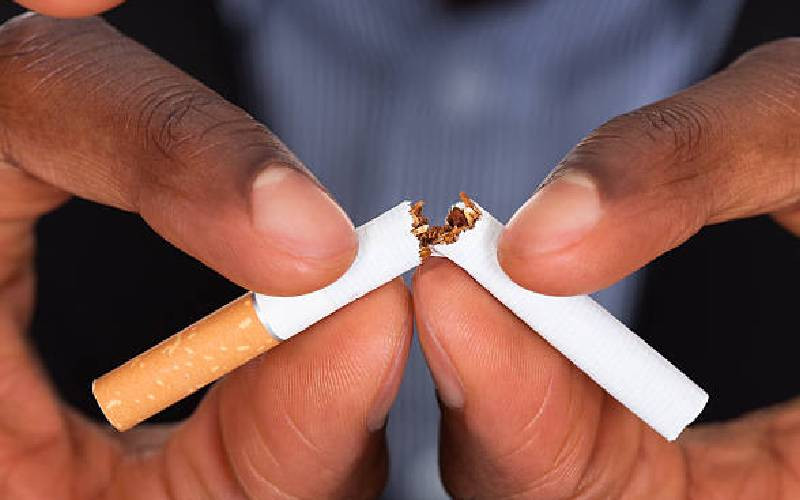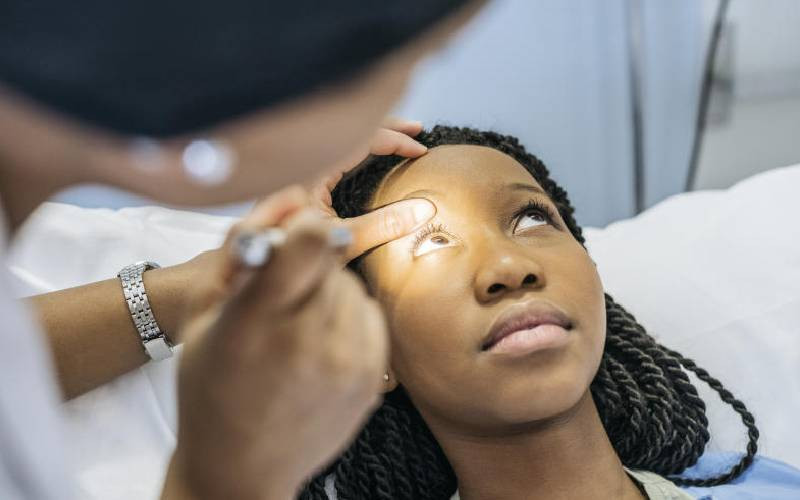
An estimated seven million adolescents in the country missed classes for three months consecutively in the year 2019/2020, according to a new adolescent health survey released by the Ministry of Health.
The Kenya Adolescent Health Survey 2019/2020 released on Friday reveals that in the same period, at least 2 million adolescents aged between 15 and 19 years were found to be smoking, abusing alcohol and smoking marijuana.
The survey indicates that about 348,000 representing 3 per cent of the adolescent population have smoked cigarettes, the same number also was found to have abused marijuana, with about 1 million having abused alcohol, estimated at 9 per cent in the period under review.
However, on a positive note, about 11 million and 10 million attended classes and were enrolled in school respectively.
According to the survey, the number of learners who missed school was the same abusing alcohol and drugs.
"94 per cent have ever attended school, 87 per cent are currently enrolled, and 60 per cent have missed school for 1 to 5 days in the past 3 months," reads a section of the survey.
In the report, nationally, the substance frequently used by adolescents aged between 15 and 19 years was alcohol at 9.9 per cent, alcohol at 9 per cent and 3 per cent use of cigarettes.
Use of khat stood at 1.5 per cent, followed by cannabis at 0.9 per cent and cocaine at 0.1 per cent.
Boys are reported to abuse substances more as compared to girls in the report, at 3.3 per cent against 1.3 per cent usage in females.
"The Majority of the respondents who reported having ever used a substance were male (3.3 per cent) than female (1.3 per cent).
The commonly used substances in adolescent females were alcohol, khat, and cannabis at 4.9, 1.5 and 0.9 per cent.
"Male adolescents reported higher use of substances compared to females, with most of the respondents who reported doing so having ever used a substance before the age of 15 years," adds the report.
Alcohol followed by cigarettes was the most frequently used type of substance in Kenya by adolescents.

During the survey, no female participant reported using an amphetamine-type stimulant (Cloud 9) while 0.2 per cent of male adolescents had ever used it.
According to the report, adolescents access substances by sourcing them in shops or a street vendor, from their peers, some send someone to buy for them, whereas a number get them from their homes.
A number are also given by their relatives, social events like parties in school functions and social events.
The study linked the use of substances to mental illnesses among adolescents in the country.
For instance, the Western region scored highest in substance use at 27.8 per cent, followed by Lower Eastern at 23 per cent and 1.6 per cent in Nairobi.
Depression and anxiety were ranked high in the Lower Eastern region at 22.2 per cent and 17.3 per cent respectively, while Nairobi recorded 10.1 and 9.4 per cent of the cases.
Central region, on the other hand, which has in the past recorded more cases of substance and alcohol use in adults, scored at least 1.9 per cent.
"Nationally, depression symptoms domain 7.2 per cent was reported by more adolescents than anxiety at 6 per cent," reads a section of the report.
The main objective of the survey was to assess health-related knowledge, attitude, behaviour, demographic and clinical characteristics, as well as access to services, among adolescents aged 10 to 19 years in Kenya.
Additionally, the survey found that the majority of male adolescents representing 81.9 per cent spent their own money on girlfriends, followed by entertainment at 65 per cent and beauty products at 55.2 per cent.
A similar trend was observed among the female counterparts with 72.9 per cent found to spend their money on a boyfriend, 47.4 per cent on entertainment and 31 per cent on beauty products.
The adolescents are also reported spending money to purchase drugs and substances.
"2.1 per cent of adolescents reported spending money on drugs and alcohol, with 81.2 per cent of them reporting to have used their own money. 2.8 per cent reported spending money on sports betting, of whom 90.5 per cent reported having used their own money,".
"With regard to personal harmful expenditure, more male adolescents spent their money on sports betting followed by drugs and alcohol at 90.55 and 81.2 per cent respectively compared to their female counterparts at 22.3 per cent and 18.1 per cent," adds the report.
Meanwhile, the survey found that the availability of young-friendly facilities helps improve adolescent health and access to information.

Overall, at least 57 per cent of the facilities guaranteed that adolescent client information will be protected, with Nyanza South recording the highest number of facilities that guaranteed the adolescent information be protected.
Only six per cent of the sampled health facilities nationally reported denying services to the adolescent's client, the highest number being in the Western region at 27 per cent, whereas Central, Lower Eastern, Nairobi, North Eastern, Nyanza South and Rift Valley South regions reported zero health facilities that denied the adolescent services.
The survey found that nutrition is also a key area in the development of adolescence and boosting growth.
In the study. 11.6 per cent of adolescents nationally were thin or wasted, and 10.7 per cent were overweight or obese.
At least 53 per cent of adolescents consumed iron-rich foods whereas 88 per cent consumed Vitamin A-rich foods, with 41 per cent having been reached with messages on anaemia.
"Only, 9.4 per cent of adolescents were aware of problems and diseases related to low intake of fruits and vegetables, 6.5 per cent were aware of problems and aware of problems and diseases related to too much and diseases related to low fibre intake 14.7 per cent were aware of problems and diseases related to too much intake of salt or sodium in the diet and only 13.9 per cent were aware of problems and diseases related to the amount of fat people eat," reads the study.
Overall, 9 per cent of adolescents were overweight, while 1.7 per cent were obese.
More female adolescents were overweight or obese (13.5 per cent) compared to their male counterparts (8 per cent).
A higher proportion of adolescents residing in urban areas were overweight compared to those in rural areas, at 10.1 and 8.2 per cent respectively.
Nyanza Central has the highest proportion) of adolescents who are overweight (13.4 per cent) followed by Central (12.4 per cent); the lowest proportion is observed in the lower Eastern and Coast regions (4.4 per cent and 5.3 per cent).
The study shows that most adolescents had normal weight. However, a substantial number of adolescents are thin/wasted, overweight or obese, whereas more boys are more likely to be thin/wasted than girls.
Malnourished adolescents are at a higher risk for impaired growth, low immunity, poor mental development, and mortality.
 The Standard Group Plc is a multi-media organization with investments in media
platforms spanning newspaper print
operations, television, radio broadcasting, digital and online services. The
Standard Group is recognized as a
leading multi-media house in Kenya with a key influence in matters of national
and international interest.
The Standard Group Plc is a multi-media organization with investments in media
platforms spanning newspaper print
operations, television, radio broadcasting, digital and online services. The
Standard Group is recognized as a
leading multi-media house in Kenya with a key influence in matters of national
and international interest.











